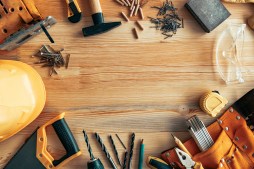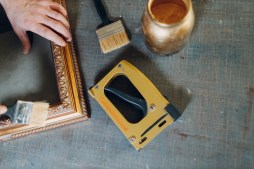Mastering the Basics: Essential Car Maintenance Tasks You Can Do Yourself

Maintaining your car doesn’t have to feel overwhelming. While certain repairs and maintenance activities are best suited for professionals, there are plenty of straightforward tasks that you can tackle on your own. Taking on these basic maintenance duties will not only save you both time and money but also provide you with a rewarding sense of achievement. In this article, we’ll delve into essential do-it-yourself (DIY) car maintenance tasks that every car owner should be familiar with.
Oil Change – Keeping Your Engine Running Smoothly
Keeping your engine’s oil clean and fresh is crucial for its overall performance and longevity. An oil change is one of the most important maintenance tasks that you can easily do yourself.
First, gather all the necessary tools and materials such as a wrench, an oil filter wrench, a drain pan, a funnel, and new oil and filter. Start by locating the oil drain plug under your car’s engine using a jack if necessary. Place the drain pan underneath it to catch the old oil as it drains out. Unscrew the plug using the wrench and let all the old oil flow out completely.
Once drained, remove the old oil filter using an oil filter wrench. Make sure to clean any residual oil from around the area before installing a new filter. Apply a thin layer of fresh oil on the rubber gasket of your new filter before screwing it in place.
Now it’s time to add fresh oil into your engine through the valve cover opening using a funnel. Refer to your vehicle’s manual for information on how much oil is needed and what type is recommended. After adding sufficient amount of new oil, start your engine for a couple of minutes to circulate it throughout before checking if any additional amount is needed.
Tire Maintenance – Ensuring Safety on the Road
Proper tire maintenance is vital for ensuring safety while driving. Regularly checking and maintaining tire pressure, tread, and alignment are tasks that you can easily handle yourself.
Start by inspecting your tires for any signs of wear or damage. Look for bulges, cracks, or uneven wear patterns. If you notice any issues, it may be time to replace your tires. Next, check the tire pressure using a tire pressure gauge. This should be done when the tires are cool for accurate readings.
If the tire pressure is low, use an air compressor to inflate them to the recommended level indicated in your vehicle’s manual or on a sticker located on the driver’s side door jamb. On the other hand, if the pressure is too high, release some air using a valve stem tool until it reaches the correct level.
Lastly, ensure that your tires are properly aligned by examining their tread wear patterns. Uneven wear may indicate misalignment and should be checked by a professional if necessary.
Battery Maintenance – Keeping Your Car Powered Up
A well-maintained battery is essential for starting your car reliably and preventing unexpected breakdowns. Although batteries require replacement every few years, basic maintenance can extend their lifespan.
Start by inspecting your battery for any signs of corrosion or loose connections. Corrosion can be cleaned using a mixture of baking soda and water applied with a wire brush. Ensure that all connections are tight and secure.
Next, check the battery’s fluid levels if applicable (not all batteries require this step). If the fluid is low, carefully add distilled water until it reaches the appropriate level indicated on the battery casing.
Finally, consider investing in a battery charger to keep your battery charged during periods of prolonged inactivity or extreme weather conditions.
Air Filter Replacement – Improving Engine Performance
Replacing your car’s air filter regularly is an important maintenance task that improves engine performance and fuel efficiency. This task can easily be done at home without much hassle.
First, locate the air filter housing under the hood of your car. It is usually a black plastic box with metal clips or screws holding it together. Open the housing and remove the old air filter.
Inspect the old filter for any signs of dirt, dust, or damage. If it appears dirty or clogged, it’s time for a replacement. Insert a new filter into the housing, ensuring that it fits snugly.
Close the housing and secure it tightly with clips or screws. Make sure all connections are secure before closing the hood.
By mastering these basic car maintenance tasks, you can save time and money while ensuring that your vehicle runs smoothly and reliably. Remember to always consult your vehicle’s manual for specific instructions and recommendations.
This text was generated using a large language model, and select text has been reviewed and moderated for purposes such as readability.





